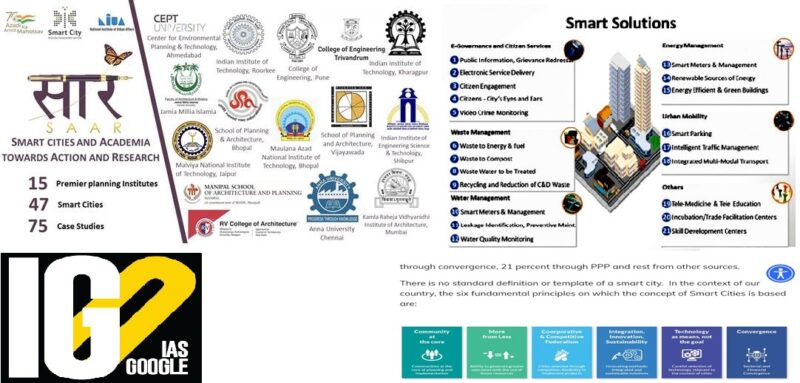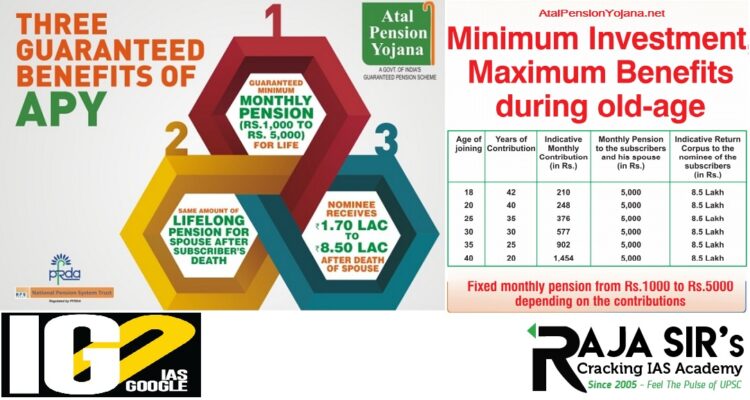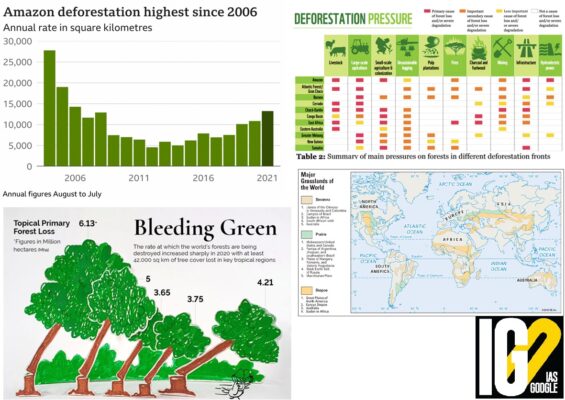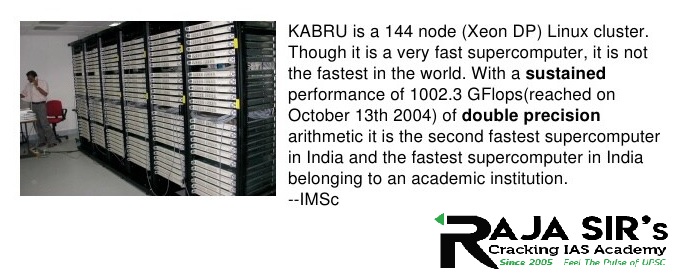- Home
- Prelims
- Mains
- Current Affairs
- Study Materials
- Test Series
 EDITORIALS & ARTICLES
EDITORIALS & ARTICLES
Jan 07, 2022
UJALA COMPLETES 7 YEARS OF ENERGY-EFFICIENT AND AFFORDABLE LED DISTRIBUTION
Recently, Ministry of Power successfully completed seven years of distributing and selling LED lights under its flagship UJALA programme.
 UJALA Scheme:
UJALA Scheme:
 One District One Product
One District One Product
 Smart cities and Academia Towards Action & Research (SAAR)
Smart cities and Academia Towards Action & Research (SAAR)
 Atal Pension Yojana (APY)
Atal Pension Yojana (APY)
 National Tiger Conservation Authority (NTCA)
National Tiger Conservation Authority (NTCA)
 Facts about Cerrado:
Facts about Cerrado:
 What is a chip?
What is a chip?

 UJALA Scheme:
UJALA Scheme:
- Unnati Jyoti by Affordable LEDs for All (UJALA) was launched in 2015.
- It has evolved to be world’s largest zero subsidy domestic lighting programme.
- Aim: To address concerns like high electrification cost and high emissions that result from inefficient lighting.
- Implementing agencies: Electricity Distribution Company (EDC), Energy Efficiency Services Limited (EESL).
- Every domestic household having a metered connection from their respective Electricity Distribution Company is eligible to get the LED bulbs.
- The consumer can purchase the LED on EMI or on upfront payment by paying the full amount.
- EESL distributes LED bulbs to households at 40 % of market price.
- Total upfront investment and risk coverage borne by EESL.
- More than 36.78 crore LEDs have been distributed across the country.
- The programme has resulted in massive energy savings.
- 47,778 million kWh per annum energy has been saved along with 3,86 crore tonnes of reduction in CO2
- It has helped in reducing annual household electricity bills.
- It provides an impetus to the domestic lighting industry.
- It encourages Make in India as domestic manufacturing of LED bulbs, which has increased from 1 lakh per month to 40 million per month.
- It provides economies of scale to manufacturers through regular bulk procurement.
- This enables manufacturers to bring down the cost of LEDs for retail segment as well.
- The cost of LED bulb has come by down by 85 % (from INR 300-350 per bulb to INR 70-80 per bulb).
 One District One Product
One District One Product
- Launch by: Uttar Pradesh government in 2018.
- It was operationally merged with ‘Districts as Export Hub’ initiative being implemented by DGFT, Department of Commerce, with Department for Promotion of Industry and Internal Trade (DPIIT) as a major stakeholder.
- The idea is to select, brand, and promote One Product from each District of the country.
- Aim: For promoting exports, promoting manufacturing & services industry in the district and generate employment in the district.
- The States would identify the food product for a district, keeping in perspective the focus of the scheme on perishables.
- The ODOP product could be a perishable agri produce, cereal-based product, or a food product widely produced in a district.
- Launched: Ministry of Food Processing Industries in 2020 as a Centrally Sponsored Scheme
- Aim: To enhance the competitiveness of existing individual micro-enterprises in the unorganized segment of the food processing industry.
- Implemented over a 5-year period from 2020-21 to 2024-25.
- To address the challenges faced by the micro-enterprises and to tap the potential of groups and cooperatives in supporting the upgradation and formalization of these enterprises.
- Increased access to credit by existing micro food processing entrepreneurs, FPOs, Self Help Groups, and Co-operatives.
- Integration with an organized supply chain by strengthening branding & marketing.
- Support for the transition of existing 2,00,000 enterprises into the formal framework.
- Increased access to common services like common processing facility, laboratories, storage, packaging, marketing, and incubation services.
- Strengthening of institutions, research, and training in the food processing sector.
- Increased access for the enterprises, to professional and technical support.
 Smart cities and Academia Towards Action & Research (SAAR)
Smart cities and Academia Towards Action & Research (SAAR)
- SAAR is a combined initiative of MoHUA, National Institute of Urban Affairs (NIUA) and other 15 premier architecture & planning institutes of India.
- Under SAAR, the Indian academic institutions will be working with MoHUA’s Smart Cities, to document the projects undertaken by the Smart Cities Mission.
- This documenting process is aimed to capture the learnings from best practices, provide opportunities on urban development projects to students, and enable real-time information flow between urban practitioners and academia.
- The SAAR compendium will also act as a first point of reference for future research in the field of urbanization.
- Scheme by: Ministry of housing and urban affairs (MOHUA), launched in 2015.
- Aim: Sustainable and inclusive development of 100 smart cities having quality urban infrastructure, including sanitation and smart solution like, affordable housing, CCTV, parking etc.
- Component: It has 3 strategic components, namely; i) City improvement (retrofitting), ii) City renewal (redevelopment) and iii) city extension (Greenfield development) plus a Pan-city initiative in which Smart Solutions are applied covering larger parts of the city.
- Averagely 100 crore rupees per city will be given by centre. Rest money come from bonds, ULBs, PPP mode, state government etc.
- Direct funding of 45% from state and centre, 21% funding from other schemes of state and centre for ULB, 21% funding from PPP modal., Loans/Debt from source like ULB bonds etc. (4%), Own sources (1%), Other sources (8%).
 Atal Pension Yojana (APY)
Atal Pension Yojana (APY)
- It is an Indian Government Scheme for the old age income security of the unorganized workers.
- The scheme is administered by the Pension Fund Regulatory and Development Authority (PFRDA) through NPS architecture.
- It is focused on encouraging and enabling them to save for their retirement.
- To address the longevity risks among the workers in the unorganized sector and to encourage the workers in the unorganized sector to voluntarily save for their retirement.
- All citizens of India aged between 18-40 years.
- Guaranteed minimum monthly pension for the subscribers ranging between 1000 and Rs. 5000 per month.
- The government will also co-contribute 50% of the subscriber’s contribution or 1000 per annum, whichever is lower.
- Government co-contribution is available for those who are not covered by any Statutory Social Security Schemes and are not the income taxpayer.
- The exit from APY is permitted at the age of 60 with 100% annuitization of pension wealth. On exit, the pension would be available to the subscriber.
- In case of death of subscriber, the pension would be available to the spouse and on the death of both of them (subscriber and spouse), the pension corpus would be returned to the nominee.
 National Tiger Conservation Authority (NTCA)
National Tiger Conservation Authority (NTCA)
- NTCA is a statutory body under the Ministry of Environment, Forests and Climate Change constituted under enabling provisions of the Wildlife (Protection) Act, 1972.
- Aim: Strengthening tiger conservation, as per powers and functions assigned to it under Wildlife (Protection) Act, 1972.
- Providing statutory authority to Project Tiger so that compliance of its directives become legal.
- Fostering accountability of Centre-State in management of Tiger Reserves, by providing a basis for MoU with States within our federal structure.
- Providing for an oversight by Parliament.
- Addressing livelihood interests of local people in areas surrounding Tiger Reserves.
- Evaluate and assess various aspects of sustainable ecology and disallow any ecologically unsustainable land use such as, mining, industry and other projects within the tiger reserves.
- Lay down normative standards for tourism activities and guidelines for project tiger from time to time for tiger conservation in the buffer and core area.
- Provide for management focus and measures for addressing conflicts of men and wild animal.
- Provide information on protection measures including future conservation plan, estimation of population of tiger and its natural prey species, status of habitats and disease surveillance.
- Ensure critical support including scientific, information technology and legal support for better implementation of the tiger conservation plan.
- CA|TS is a set of criteria which allows tiger sites to check if their management will lead to successful tiger conservation.
- It was officially launched in 2013.
- It is an important part of Tx2, the global goal to double wild tiger numbers by the year 2022.
- Aim: To ensure safe havens for tigers.
- It is organised under seven pillars and 17 elements of critical management activity.
- CA|TS is a globally accepted conservation tool that sets best practices and standards to manage tigers and encourages assessments to benchmark progress.
- CA|TS accreditation is a global recognition of good tiger governance.
- It will strengthen management practices in the tiger reserve area as per international common criteria.
- Manas, Kaziranga and Orang in Assam;
- Satpura, Kanha and Panna in Madhya Pradesh;
- Pench in Maharashtra;
- Valmiki Tiger Reserve in Bihar;
- Dudhwa in Uttar Pradesh;
- Sunderbans in West Bengal;
- Parambikulam in Kerala;
- Bandipur Tiger Reserve in Karnataka;
- Mudumalai and Anamalai Tiger Reserves in Tamil Nadu
 Facts about Cerrado:
Facts about Cerrado:
- Cerrado, spread across the different states of Brazil, is the world’s most species-rich savanna.
- It is often called an upside-down forest because of the deep roots its plants sink into the ground to survive seasonal droughts and fires.
- The destruction of this biome is the main cause of greenhouse emissions in Brazil.
- Deforestation refers to the purposeful clearing of forest areas to use it as agricultural croplands, urbanization, or mining activities.
- Forest fires destroys forests and biodiversity, and also releases CO2 into the atmosphere.
- Diseases that affect trees.
- Parasitic attack
- Extreme weather such as hurricanes or floods
- Agriculture and Grazing
- Main cause of deforestation: Conversion of forest land to cropland and pasture for growing crops or raising livestock
- Commercial or industrial agriculture (field crops and livestock) – accounts for 40% loss
- Slash-and-burn agriculture
- Mining on tropical forests
- Construction of human infrastructures (accounts for 10%)
- Urbanization
- Loss of biodiversity: Destruction of forests leads to destruction of the habitat of many species, thus impacting the survival of global bio-diversity.
- Soil degradation: When the trees that bind the soil together are cut down, it results in soil erosion.
- Global warming: Trees absorb CO2, thus helping in mitigate the greenhouse effect.
- A savanna is a rolling grassland scattered with shrubs and isolated trees, which can be found between a tropical rainforest and desert biome.
- Location: They are mostly found in the equatorial regions, on the edges of tropical rainforests.
- The largest Savanna is found in equatorial Africa.
- Climate: Savannas have warm temperature.
- They have extreme wet seasons and dry seasons:
- a very long dry season (winter), with an average rainfall of 4 inches.
- a very wet season(summer), with an average rain of 15 to 25 inches.
- Flora: Grasslands and dispersed trees forms the vegetation of savanna.
- It has wild grasses and shrubs.
- The trees include Acacia, Baobab, Pine and Palm.
- Fauna: Many of the savanna biome animals are grazing herbivores and rodents.
- Example: elephants, giraffes, zebras, rhinoceroses, buffalo, lions, leopards, and cheetahs.
- Due to its open environment, camouflage and mimicry are essential for animal survival in the savanna.
- Soil: Has porous soil, which means the water drains away very quickly.
- The first layer of soil is made of humus. Second is the hardpan of laterite.
- Third is of red clays and re-deposited silica. Fourth is bedrock, where plant roots cannot penetrate the hard ‘pan’ layer in or subsoil, restricting vegetation growth.
- Threats: Controlled burns by humans for land clearing, Overgrazing
- They are found near the equator and bordered by tropical rainforests and deserts.
- The grasslands occupying the area between the two tropics, the Tropic of Cancer to the north and the Tropic of Capricorn to the south, is called tropical grasslands.
- The biome covers over half of Africa, most of South America and portions of Asia such as India.
- Example: Serengeti in Africa.
- Brazilian savanna (Cerrado) is included in this category, known for its exotic and varied flora.
- Temperate savannas are mid-latitude savannas with wetter summers and drier winters.
- They cover much of the Great Plains of the United States.
- Example: Temperate savanna of Southeast Australia.
- Mediterranean savannas are mid-latitude savannas in Mediterranean climate regions, with mild, rainy winters and hot, dry summers.
- Example: Alentejo region in Portugal.
- Flooded savannas are savannas that are flooded seasonally or year-round.
- They are found mostly in the tropics and subtropics.
- Example: Pantantal in South America.
- Montane savannas are mid- to high-altitude savannas, located in a few spots around the world's high mountain regions.
- Example: The mountains of Angola in equatorial Africa.
- The dynamic and iconic form of the building is derived from the hilly terrain of the State of
- Bamboo architecture is represented in the facade of the terminal building by way of a floral jaali pattern depicting the forests and greens of the region.
- A jali is the term for a perforated stone or latticed screen, usually with an ornamental pattern constructed through the use of calligraphy and geometry.
- This form of architectural decoration is common in Hindu temple architecture, Indo-Islamic Architecture and more generally in Islamic Architecture.
- Local tribal stone sculptures of the Unakoti Hills and local bamboo handicrafts have been extensively used in the interiors.
- Maharaja Bir Bikram Kishore Manikya Debbarman Bahadur was a king of Tripura State.
- Born: 19th August of 1908 in Tripura.
- He reigned over Tripura 1923-1947.
- He is known as the "Modern Architect of Tripura".
- He was the first ruler who visited Europe and America from 1931 to 1939.
- He was considered one of the pioneers for the land reforms.
- He died at a very young age of 39 in 1947.
 What is a chip?
What is a chip?
- Chips are usually made from silicon, that “semi-conducts” electricity.
- The chip performs a variety of functions.
- Memory chips, which store data, are relatively simple and are traded like commodities.
- Logic chips, which run programs and act as the brains of a device, are more complex and expensive.
- The chips are manufactured in factories called
- They are faster, cheaper and more efficient.
- Shift to Work from home increased the sales of laptops, home networking gear etc in which chip is used
- Sudden rebound of car sales
- Building up of inventory by Huawei Technologies to ensure it could survive U.S. sanctions that were set to cut it off from its primary suppliers.
- Power outages in some parts of US shut semiconductor plants.
- The Policy envisions positioning India as a global hub for Electronics System Design and Manufacturing (ESDM).
- Objective: To encourage and drive capabilities in the country for developing core components, including chipsets, and create an enabling environment for the industry to compete globally.
- Create eco-system for globally competitive ESDM sector: Promoting domestic manufacturing and export in the entire value-chain of ESDM.
- Provide incentives and support for manufacturing of core electronic components and significantly enhancing availability of skilled manpower, including re-skilling.
- Provide special package of incentives for mega projects which are extremely high-tech and entail huge investments, such as semiconductor facilities display fabrication, etc.
- Formulate suitable schemes and incentive mechanisms to encourage new units and expansion of existing units.
- Promote Industry-led R&D and innovation in all sub-sectors of electronics, including grass root level innovations and early-stage Start-ups in emerging technology areas such as 5G, Internet of Things, Artificial Intelligence (Al), Machine Learning, etc.
- Launched in April 2020.
- To address the disabilities, by providing support for creation of world class infrastructure along with common facilities and amenities.
- To provide financial assistance for setting up of both EMC projects and Common Facility Centres (CFCs) across the country.
- Launched in December 2021.
- The scheme will be phased out over six years.
- It has an outlay of Rs 76,000 crore.
- Objective: To offer infrastructure support to semiconductor manufacturers to attract big players.
- Article 348: Language to be used in the Supreme Court, High Courts and for Acts, Bills, etc.
- Article 348 (1): It provides that all proceedings in the Supreme Court and High court shall be in English Language until Parliament by law otherwise provides.
- Article 348 (2): The Governor of the State with the consent of the President, authorize the use of the Hindi or any other language used for official purpose of the State,
- In the proceedings of the High Court, decrees, judgments or orders passed by such High Courts shall be in English.
- Section 7 of the Official Languages Act, 1963: It provides the use of Hindi or official language of a State in addition to the English authorized with the consent of the President of India, Governor of the State for purpose of judgments etc.

- Institute of Mathematical Sciences was founded in Chennai by Alladi Ramakrishnan in 1962.
- Nobel Laureate Subrahmanyam Chandrasekhar gave the inaugural lecture.
- It is funded mainly by the Department of Atomic Energy.
- It developed Kabru supercomputer, which is listed in the Top 500 list of the world's most powerful computers.









 Latest News
Latest News General Studies
General Studies